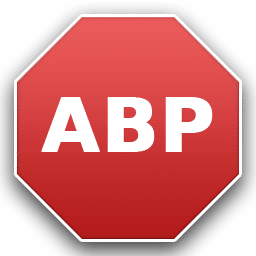Why Ad Blocking Can Hurt Ad Blockers
 Ad blocking has been a hot-button issues for webmasters and content creators for years. Back in 2010, for example, the site Ars Technica conducted an experiment and blocked the site’s content to those running ad blocking plugins.
Ad blocking has been a hot-button issues for webmasters and content creators for years. Back in 2010, for example, the site Ars Technica conducted an experiment and blocked the site’s content to those running ad blocking plugins.
However, in the years since, ad blocking has not gone away and, if anything, has become an even more divisive issue as ad blocking has become more and more mainstream. Not only are more and more users installing plugins like Adblock Plus, but new tools such as readability plugins, have more users removing ads from web pages than ever before.
But it isn’t just limited to the Internet. Last year, Dish Network launched its “Hopper” DVR, a system that automatically skips ads in previously recorded programs. That product has attracted multiple lawsuits from the various TV networks, but, so far, they have been unsuccessful at stopping sale of the system.
And there are even hardware solutions, such as Ad Trap, a device that managed to raise over $200,000 on Kickstarter to remove all ads on one’s network, regardless of device software.
But while the argument about the ethics of ad blocking will continue to rage on, there’s another problem with ad blocking: It’s trading a short term gain, the ability to not see ads today, in exchange for what could be a much worse future for content consumers.
This doesn’t require a lot of fortune telling, in fact, many of the possibilities are already being tested, but could be put into full use if ad blocking starts to seriously harm the bottom line of larger content creators.
The Ad Blocker as a Consumer
 If you consume professionally-created content, online or off, that content was created and distributed at a cost. If the person or company behind it wants to stay in business, they have to recoup those costs plus earn a profit.
If you consume professionally-created content, online or off, that content was created and distributed at a cost. If the person or company behind it wants to stay in business, they have to recoup those costs plus earn a profit.
There are many ways that the creator can do this, including selling the work directly, using it as a loss leader for a for-profit business or by using it to display advertising. However, in all of the systems, the consumers pay for the work, either through attention or direct dollars.
As a professor of mine once said, “If you’re not paying for the beef, then you’re the cow.” or, more succinctly, if you aren’t paying for it, then you are the product.
However, ad blockers short circuit that. People who block ads simply don’t pay into the creation of the content. Though they might support the site and community in other ways, there is no direct financial benefit.
Currently though, for most creators, the level of ad blocking is still at a “nuisance” level. Though most would prefer you didn’t block ads, the percentage of people who do is still limited on most types of sites and not a huge threat to the bottom line.
However, if that changes and more companies have their business models threatened by ad blocking, the reaction may not be what those blocking ads want.
Ads That Can’t Be Blocked
When content creators are faced with this threat, they have several options. The two big choices being whether to simply close up shop or they can try and tweak their business model to recoup lost revenue, which most will try to do.
On the latter, the choices are fairly wide open. Some can, and will, put their content behind paywalls like many newspapers and cable TV stations are doing now. Though there may still be some limited advertising, there will be less dependance on it as a source of income.
Another possibility, however, is to simply find new ways to advertise to ad blockers.
Ad blockers work because, in most cases, there’s a fairly strong separation between advertising and creative/editorial content. A newspaper, for example clearly separates ads from news content, TV shows have dedicated commercial breaks and websites have advertising sections that are, usually, not mingled with the content.
This is done partly for ethical reasons. It’s considered poor form to mingle your advertisements and your content too much. Another is practicality. It’s easier to sell and produce ads if you have consistent sizes and time slots, which require content creators to set aside portions of their work dedicated to advertising.
However, the easiest way to defeat ad blockers is to blur the lines between ads and content and, if lucrative or necessary enough, some content creators may do just that.
To a large degree, it’s already happening. Networks are already digitally inserting product placements into the content of TV shows, such as “How I Met Your Mother” reruns. Many blogs and newspapers are already accepting sponsored posts and other sites are accepting sponsorship deals that embed promotional content directly into the site itself.
These ads, at the very least, will be much more difficult to filter out or block. But where once advertising and content had a, mostly, healthy distance from one another. Advertising will start increasingly using content as a shield, to prevent people from either blocking or ignoring it.
In short, content creators, as long as they depend on advertising for much of their survival, will find ways to ensure that the ads get through, even if the solutions aren’t ones consumers will like.
Bottom Line
To be fair, many of the problems that have pushed content creators to implementing these tools have nothing to do with advertising. Increased competition, shrinking audiences and shortening attention spans have hurt the ad market even before ad blockers enter the fray. While this is true, losing a percentage of your viewers doesn’t help things and it creates a technical challenge that blurring the lines between advertisement is the easiest solution.
The end result though is that ad blocking doesn’t push the Internet toward a future free of advertising, rather, it pushes us toward a future of ads tougher to separate from the content and harder to remove.
We’re likely nudging toward this future regardless of ad blocking, but ad blocking is certainly a factor and could become a much bigger one. The only way to ensure better business models and a better future for content is to support the content creators that you feel are finding the right chords.
If a large people simply try to get everything for free, then creators will try to find ways to sabotage those efforts. But if they start laying a trail of dollars down to creators they support, others will chase that money.
It’s that simple.
Want to Reuse or Republish this Content?
If you want to feature this article in your site, classroom or elsewhere, just let us know! We usually grant permission within 24 hours.
